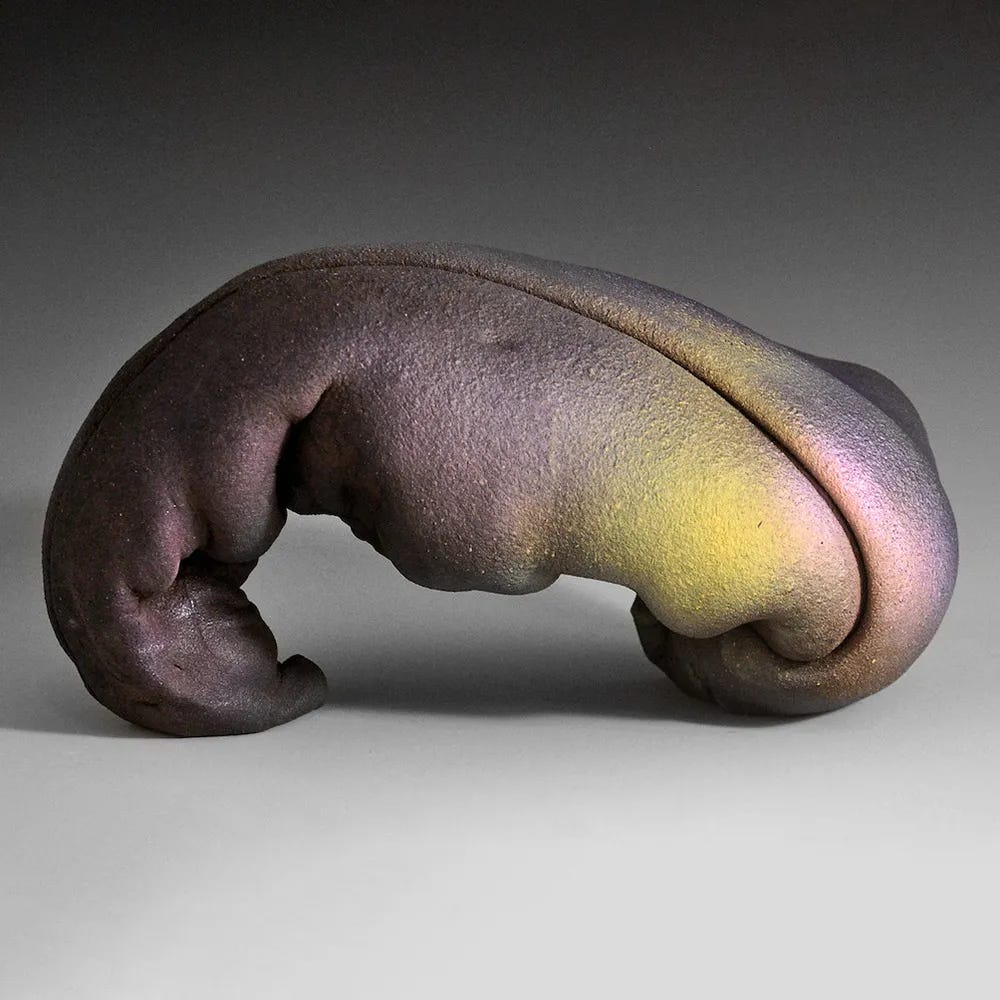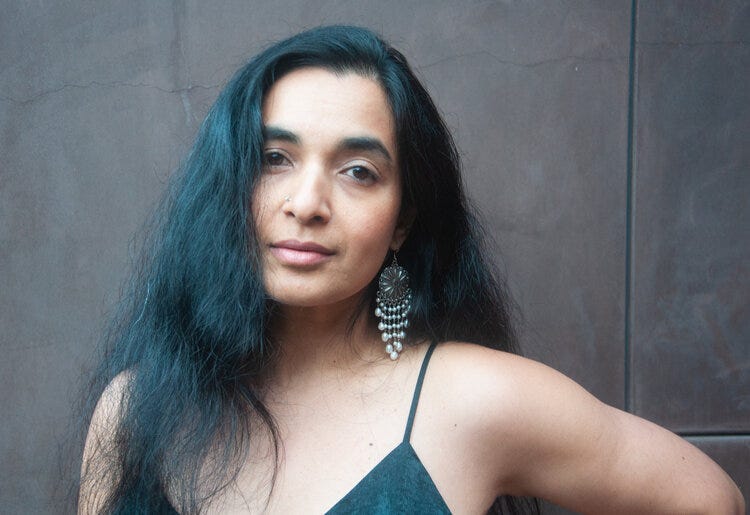Sculpting the Form: Ashwini Bhat's Exploration of Body & Landscape
The artist transforms her dance background into organic ceramic sculpture
An artist’s path to their preferred form isn’t always a straight line. Often, we explore several forms before we land on the one we choose — I remember phases of my life when I took up the bass guitar or photography or painting.
What fascinates me about that path, especially the paths with more detours, is the impact of those explorations on the final work.
When I first saw the compelling ceramic work of Ashwini Bhat, my head tilted. Her work is an exploration of forms — from the body to the landscape to animals to trees.
Sculptures such as this one could be an organ, a piece of earth, a sunset, and even a cousin to Louise Bourgeois’ Janus Fleuri series. Ashwini’s work almost demands that we see it from all angles, that we walk around, explore the work.
But back to the winding path of art: Ashwini, born in Southern India, began by studying classical Indian dance before transitioning to literature and then landing on sculpture.
My training in clay was on the kick wheel at Golden Bridge Pottery in Pondicherry, India. We made our own clay without clay mixers, pugmills, or slab rollers. While learning to center, I remember watching my teacher, Ray Meeker, working on 20-foot-tall sculptures. — Ashwini Bhat, Ceramics Monthly
Today, her work varies from intimately-sized sculptures to towering immersive pieces. In more intimate work, such as her Alive series, her sculptures are juxtaposed with the human body to draw a connection between the forms.
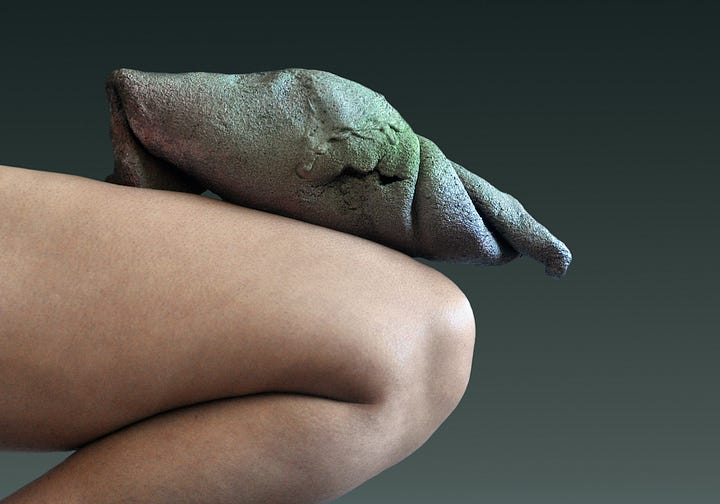

Where the Alive series explore sculpture’s connection to the body, her Liquid Earth creates electric, nestled forms that recall the layers of the planet.
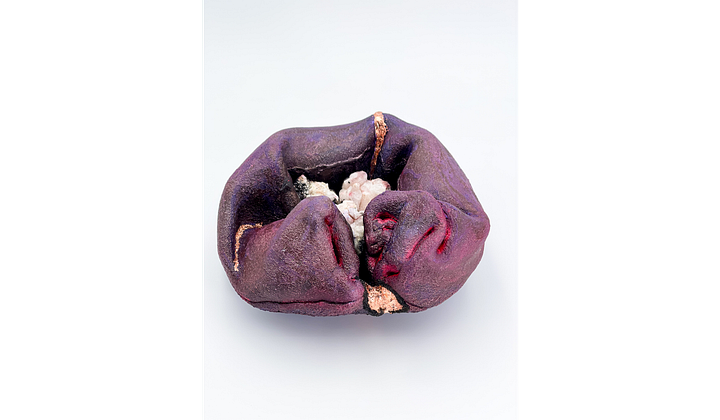
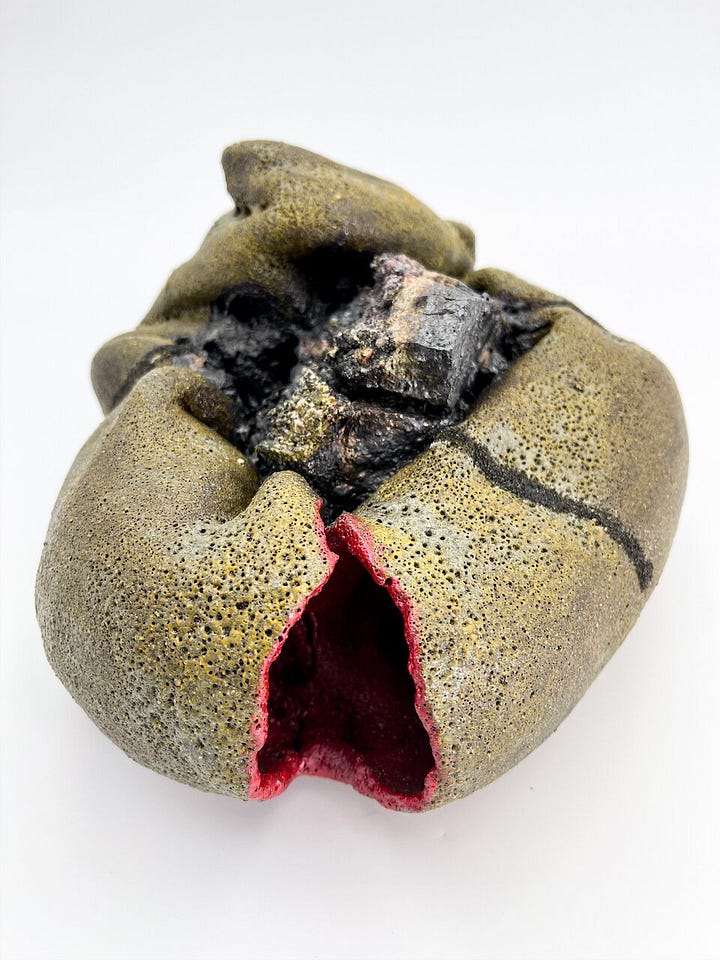
When Ashwini moved from wheel-throwing to hand-building her sculptures, she found herself drawn to “groggy red clays” fired at exceedingly high temperatures — think 2230°F. In addition to glazes, her work often incorporates organic materials, metallics, bits of ribbon.
For her new show, In Your Arms, I’m Radiant, Ashwini partnered with her frequent collaborator, husband, and poet Forrest Gander. The installation includes sculptures both large and small that interrogate her relationship to her adopted home, California, as well as the body.
I spoke with Ashwini ahead of the January 14th opening of In Your Arms, I’m Radiant at the Shoshana Wayne Gallery in Los Angeles on January 14th.
SRE: Tell us a little bit about how you got to where you are today.How did you begin making art? When did you start making work and what drew you to the practice?
BH: I come from a rural small town on the southwest coast of India. My initial training is in literature, translation, and Bharatanatyam, a southern Indian classical dance form. After 17 years of training, I worked in a contemporary dance company for four and a half years, performing and touring most of the time. But I was always drawn to sculpture as I find its close connection to (my own and the viewers’) bodies fascinating. Due to an injury, I found time to take a break from dance and explore a new trajectory. After working with clay for a year, there was no looking back. I felt like I found my medium. Clay allowed me to work with my body with a more meditative and exploratory focus.

SRE: What are your three biggest influences?
BH: My mother’s animated curiosity and zest for life and the way my father lived a life of kindness, compassion, and contentment will always be grounding references for my life. After that, it’s our invested relation to the nonhuman world. The sort of humility and the sense of expanded time that I feel when I stand in front of a giant redwood tree continues to shape me as an artist.
SRE: What’s the one piece of yours that you love the most?
BH: I think there’s a promise of love in each piece I create and there’s also the promise of a more significant work to come. I think I love the idea of the challenge the most.
But if I have to choose a single piece, I’m thinking of “Bhumi, The Living Earth,” which I finished this year. I’ve been obsessed with ritualistic female divinity forms from South Asia for the last two decades, even before I came into sculpture. Between 2011 and 2017, I worked on various imaginations of these forms. This year I revisited those forms but adapted new technical, formal, and cross-cultural explorations. In “Bhumi” I feel I see a perfect blend of fragility and solidity. It’s a totemic sculpture that makes the most of my current aesthetic repertoire. I learned a lot by creating this piece and it— she— became a guiding figure for the rest of the sculptures in my show— like a mother tree!
SRE: What are the main philosophical questions your work is interrogating?
BH: I’m drawn to philosophical thought that challenges the privileging of human existence over the non-human. In my current work, I’m addressing the phenomenon of transformation— of material, and self. How is identity sharpened by its relationships? How can art cross cultural and habitual divides? In a world of technology and spectacle, how do we articulate deep feeling?
SRE: Let’s talk about inspirations: What music do you listen to while you are making your work? Are you reading anything inspiring? What other artists are you currently obsessed with? Are you researching anything wild?
AB: For some strange reason, I can’t listen to music when I work. Instead, I usually listen to audiobooks or podcasts. Finding the Mother Tree (Suzanne Simrad), The Order of Time (Carlo Rovelli), Where I was From (Joan Didion), In a Few Minutes Before Later (Brenda Hillman); and Life in a Field (Katie Peterson) are some of my favorite books in 2022. I also found myself totally hooked on Helen Molesworth’s “Death of an Artist” and “Radical Women” (Getty) podcasts. I’ve adored and steeped myself in the works of Mrinalini Mukherjee, Linda Benglis, and Annabeth Rosen. And I’ve been researching invocational ritual dance forms from Southern India and their connection to nature, death, loss, and regeneration. I’m interested in exploring how I might link some of these ideas with California ecology.
SRE: Tell us a little about what’s next for you.
AB: I’m very proud of and looking forward to sharing a new body of work with the world in an exhibition opening on January 14th at Shoshana Wayne Gallery, Los Angeles. Since 2018, my work has been concerned with California’s ecosystems during this time of climate change. A research trip to the Carrizo Plain, to study the evidence of the San Andreas Fault, was the starting point for this exhibition. It is partly in collaboration with the writer Forrest Gander with whom I traveled to many sections of the 800-mile-long fault. As I hope you’ll notice, this body of work responds to the phenomenon of the rift, the rupture, and the renewal of nature, body, clay, and self.




